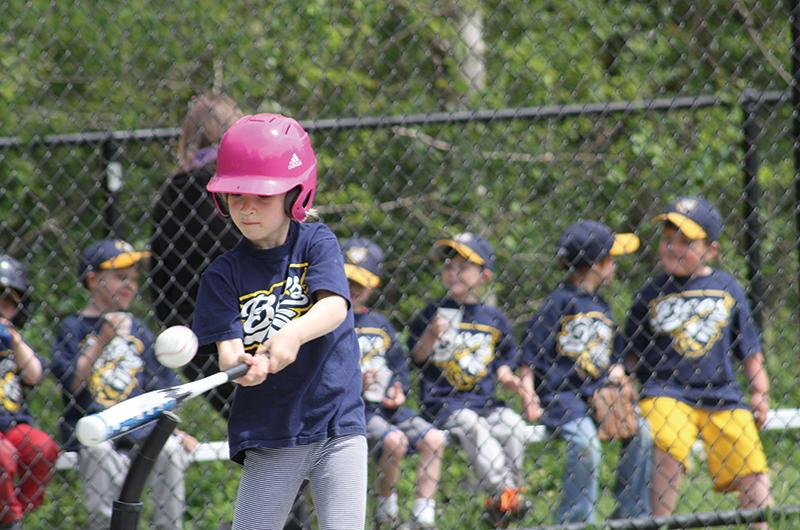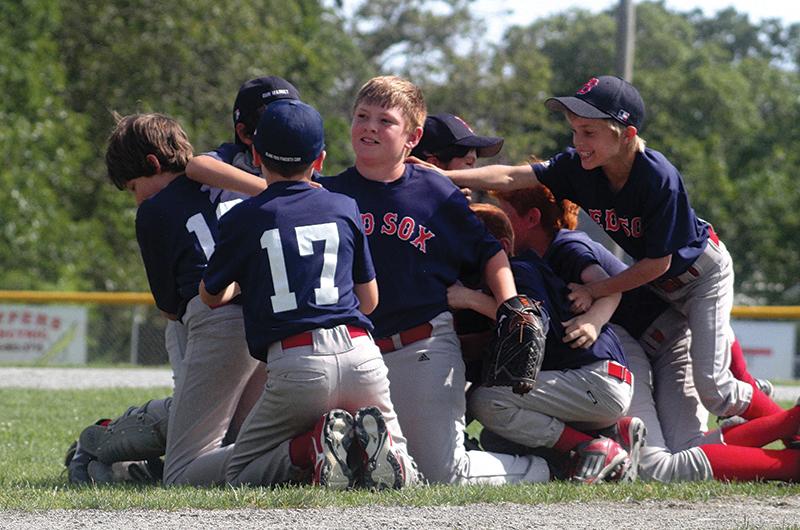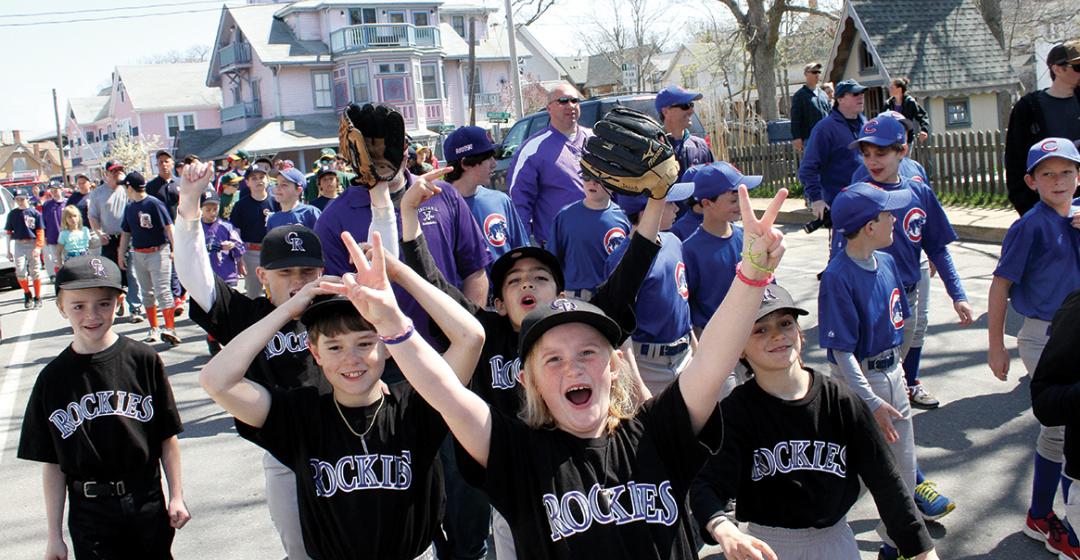One sunny May day, a swarm of Bees took over the softball field at the Tisbury School.
The tiny Bees – none were older than six – ran into the outfield, some with fistfuls of Goldfish crackers in tow, navy baseball hats shading their faces. Their tiny sneakers made the faintest of impressions on the crushed dirt of the infield.
Across the Island at the high school field, dust swirled as the cleats of a teenage base runner slid back toward first base. Over at Veira Park in Oak Bluffs, the unmistakable clink of a metal bat connecting with a fastball sent ten-year-olds dashing across green grass, gloves held up and faces tilted to the cloudless sky.

Late spring on the Island, when the trees are just starting to show signs of green and the windy days of March yield to a calmer April and May, is baseball time. The hot dogs sizzle on the grill on Saturday afternoons at Veira Park, home base for the older players in Martha’s Vineyard Little League. Younger sluggers like the Bees play at the elementary schools.
Little League is the granddaddy of the Island youth sports. It’s a classic, the national pastime on a small scale, and everything about it, from the opening day parade in late April to the Memorial Day All-Star game, sings Americana. The final games of the regular season are played over Fourth of July weekend. How could they not be?
Youth baseball has been here for more than half a century and has seen a marked resurgence over the course of the past ten to fifteen years. Last year, 275 kids, boys and girls alike, went through its four levels: T-ball, Farm League, Minor League, Little League Majors. Older kids play in the travel Gateway Babe Ruth program.
They’re coached by parents who devote innumerable hours to the overall baseball experience – base coaches, pitching coaches, managers, snack-bringers, carpool coordinators. Many are former Little Leaguers themselves. Some draw lineups in their spare time.

“It’s a massive group volunteer effort,” said Little League vice-president Adam Bresnick. Every member of the board, every coach and assistant coach, and every umpire is a volunteer, he added.
The lessons grow harder as the kids get older. (Tom Hanks was wrong, there certainly is crying in baseball.) Everyone hits in T-ball – the inning ends only when the entire side has batted – but soon enough there are tryouts and playoffs. There are championships. Somebody has to lose.
But look closely at those small players on the small fields. The cheering, the high-fives, the simple act of calling for a ball – there are other lessons at work here.
“They’re starting to all play together,” said Ariel Thomas, whose son Tysean is a Farm League player. “It’s neat to see them change and grow.”
Batter up.





